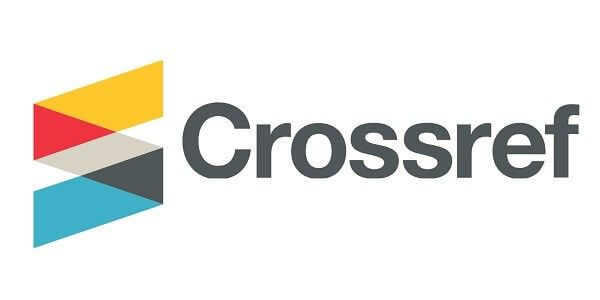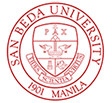A Proposed Natural Science E-Instructional Systems Design (E-ISD) for the Mendiola Consortium
Keywords:
flexible learning, authentic learning, COVID-19 pandemic, Design Thinking, E- Instructional System Design, Argyris’ feedback loop modelsAbstract
The surfacing of the coronavirus COVID-19 pandemic in the latter part of 2019 drastically forced school systems to restructure and go full-blast with remote learning. Despite the uncertainties, the educational sector must still meet academic ends and so must be resilient in facilitating flexible learning. This shift towards flexible "remote" learning has been predictable and has become, even, the most pragmatic alternative at this time towards providing effective learning delivery systems. To support flexible learning without compromising authenticity and shared identity in the context of natural science virtual teaching and learning, the researchers reviewed and consequently, proposed a recalibration of the instructional systems design (ISD) as used by Natural Science teachers and professors of the Mendiola Consortium from October 2020 through March 2021. The proposed e-ISD, arising from flexibility, authenticity, and result-orientedness as eligibility criteria, enforces the importance of content and context feedback on the instructional process. Applying Argyris' perspective (1976) on feedback loops and theories of action, it could be said that seeking the perspectives of the subject matter experts themselves, the Natural Science teachers, helped the researchers create a new meaning for Science Instruction— a meaning that is flexible and adaptable alongside the changing world.
References
Almario, A., & Austria, R. (2020). Helping K-12 Schools Transition to post-COVID 19 times.
Argyris, C. (2004) Reflection and beyond in research on organizational learning. Management Learning. 35(4), 507–509.
Argyris, C. (1976). Increasing Leadership Effectiveness. Wiley.
Batko, R. (2019). Digital Innovation as the Key Factor in Changing Organizational Identity into a Digital Organizational Identity. 49, Research Gate.
Biggs, J.B. (2003). Teaching for quality learning at university. (2nd ed.), : Open University Press.
Biggs, J.B., & K.F. Collis. (1982). Evaluating the quality of learning: The SOLO taxonomy (Structure of the observed learning outcome). Academic Press.
Boud, D. (Ed.). (1982). Towards student responsibility for learning. In Developing student autonomy in learning, 21–37. Kogan Page.
Breweton, P. & Millward, L. (2001). Organizational Research Methods, SAGE.
Clark, C., & Dunn S. (2000) Second generation research on teacher planning. Waxman HC,
Conole, G. (2016). Theoretical underpinnings of learning design. . Learning Design: Conceptualizing a framework for teaching and learning online. 42-62.
Cruz, MEP., & Doctolero, P. (2015). Articulation of Outcome-Based Education in Graduate Education: A Practitioner Action Research. UTM Jurnal Teknologi. 77(26).
Dalziel, J. (2016). Learning Design: Conceptualizing a Framework for Teaching and Learning Online. Taylor and Francis eBooks.
DepED. (2020). https://commons.deped.gov.ph/MELCS-Guidelines.pdf
Dick, W., Carey, L. & Carey, J.O. (2004) The Systematic Design of Instruction. (6th ed.). Allyn and Bacon.
Driscoll, MP. (1991). Paradigms for research in instructional systems. In Anglin G. (Ed.). Instructional technology: Past. present. and future. Libraries Unlimited. 310-317.
Dutton, J. E., & Ve Dukerich, J. M. (1991). Keeping an Eye on the Mirror: İmagine and İdentity in Organizational Adaptation. Academy of Management Review. 34, 517-54.
edtech2statetheobjectives.blogspot.com. (n.d.). http://edtech2statetheobjectives.blogspot.com/ 2015/10/assure-model.html
Entwistle, N.J., & D. Hounsell, eds. (1975). How students learn. Institute for Research and Development in Post-compulsory Education, University of Lancaster.
Huang, R.H., Liu, D.J., Tlili, A., Yang, J.F., Wang, H.H., et al. (2020). Handbook on Facilitating Flexible Learning During Educational Disruption: The Chinese Experience in Maintaining Undisrupted Learning in COVID-19 Outbreak. Smart Learning Institute of Beijing Normal University.
Hutchins, C. L. (1996). Systemic Thinking; Solving complex problems. Professional Development System.
Ibrahim, AA. (2016). Definition Purpose and Procedure of Developmental Research: An Analytical Review. Asian Research Journal of Arts & Social Sciences. 1. 1-6. https://doi.org/10.9734/ARJASS/2016/30478.
Johnson KA, & Foa LJ. (1989) Instructional design: New alternative for educative education and training. SAGE.
Karasar, N. (2000). Research methods in science. Nobel Yayin Dagitim.
Kintu, M.J., Zhu, C. & Kagambe, E. (2018). Blended learning effectiveness: the relationship between student characteristics, design features and outcomes. Int J. Educ Technology High Educ. 14, 7.
Mager, R. F. (1984). Preparing Instructional Objectives (2nd ed.). Fearon-Pittman.
Maxwell, J.A. (1996). Qualitative Research Design: An Interactive Approach. Applied Social Research Methods Series.
Moloney, B. (2018, September 5). https://elearningindustry.com/instructional-systems-design-5-basic-principles
Ramsden, P. (2003). Learning to teach in higher education. (2nd ed.), Routledge Falmer.
Reigeluth, C. M. (1999). Instructional-Design Theories and Model. Lawrence Erlbaum Associates, Inc.
Richey, Rita (1994) Developmental Research: Definition and Scope. Proceedings of Selected Research and Development Presentations at the 1994 National Convention of the Association for Educational Communications and Technology. https://files.eric.ed.gov/fulltext/ED373753.pdf
Richey, Rita. & Klein, J. (2005) Developmental Research Methods: Creating Knowledge from Instructional Design and Development Practice. Journal of Computing in Higher Education Spring Vol. 16(2), 23-38. http://dx.doi.org/10.1007/BF02961473
Riel, V. C. (1997). Corporate identity: the concept, its measurement and management. European Journal of Marketing. 340-355.
Seels B. & Glasgow Z. (1998). Making instructional design decision. Prentice-Hall, Inc.
Smith, P. L., & Ragan, T. J. (2005). Instructional Design. John, Wiley and Sons. Inc.
stats.idre.ucla.edu. (n.d.). Retrieved from https://stats.idre.ucla.edu/spss/faq/what-does-cronbachs-alpha-mean/
Strumin, A., & Jussila, J. (2009). Organizational innovation capability. In N. Oza, & P. Abrahamsson (Eds.). Building blocks of agile innovation. Book Surge. 101–118.
Taşdan, M. (2010). Örgütsel Kimlik. H. B. Memduhoğlu, K. Yılmaz (Ed.). Yönetimde Yeni aklaşımlar. 243-260. Pegem Akademi.
Tüzün, K. İ. (2006). Örgütsel Güven, Örgütsel Kimlik Ve Örgütsel Özdeşleşme İlişkisi; Uygulamalı Bir Çalışma (Yayınlanmamış Doktora Tezi). Gazi Üniversitesi Sosyal Bilimler Ens
- PDF | 131
- Abstract Views | 350
Published
How to Cite
Issue
Section
Copyright (c) 2023 Ma. Eliza Cruz, Arvin Dizon

This work is licensed under a Creative Commons Attribution-NonCommercial-NoDerivatives 4.0 International License.











